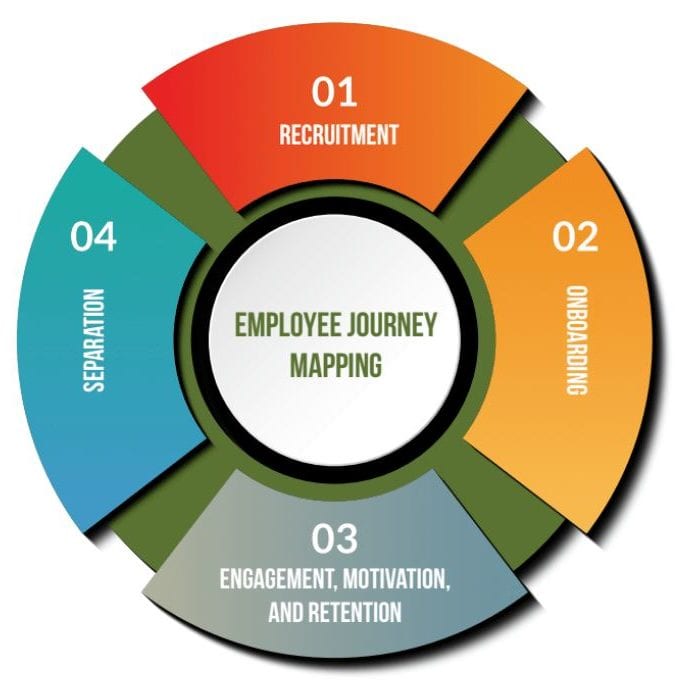In today’s economy, when unemployment is at a 30-year low, the biggest challenge employers face is just how hard it is to attract the right people. Then when they do find them, the prospects end up ghosting the company—agreeing to interviews but failing to show up, never to be heard from again. Candidates are pickier than ever. To attract the right people, it’s important to revisit employee experiences to be confident they accurately reflect the value of working for your business.
From employees’ first interactions with the employer brand through their exit from the company, understanding their experience is key. When culture and employee experience come into sync, property managers will see a positive impact on engagement, business results, and recruitment. This typically starts with identifying the gaps between what the employer promises and what the employee expects. One way to start is to apply principles from homeowner and customer experience strategies to human resources practices. Marketing and operations teams have this nailed down.
Employee experiences should be designed around what motivates and drives the person, not simple demographics and generalizations based on job title, rank, department, or location. This is important because not everyone wants the same development opportunities, benefits, or recognition. To learn more, I suggest thinking about staff members in groups differentiated by their experiences. See the following examples:
- Employee engagement: detractors, observers, participants, and promoters
- Generational diversity: traditionalists, baby boomers, Generation X, Generation Y (aka Millennials), and Generation Z
Each of these groups has different needs employers can reach with targeted initiatives and programs designed to improve their experience, and employers can use their insights to improve key points across the employment life cycle.
One tool that companies are starting to use more frequently in human resources to uncover these insights is journey mapping. Just as we can map out homeowner and guest experiences, employee journey mapping creates a visual of each stage of an employment life cycle:

The purpose of mapping the different stages is to identify the gaps between what the employer promises and what the employee expects. It helps validate that a company is spending resources wisely on what truly matters to its team. Additionally, it provides the following:
- An appreciation for what each person is doing, thinking, feeling, needing, and wanting
- A better understanding of how to help employees in each stage of the process
- Steps to improve the employee experience
Journey mapping provides clear, tangible benefits. A brand that does what it promises attracts better talent and increases employee engagement and retention. It’s a challenging task and requires a lot of effort, but the rewards are too tempting to ignore.
So how do you get started?
- Define the stages of the employee experience at your company. An example might be recruitment, onboarding, engaging, and separating. Recognize that within each stage of the journey, there will be cascading stages to identify on the journey map.
- Map it out. For each stage, describe the process the employees go through. Then describe what they are doing, thinking, feeling, needing, and wanting to strengthen their connection to the company.
- Identify the gaps and come up with solutions. Once a whole picture is formed, employers can identify ways to improve the employee experience.
The following example shows an onboarding stage of the journey map. At a high level, each stage identifies the processes new hires go through and what they are seeking from the company along the way.
Sample Employee Journey: Onboarding
- Completes new-hire paperwork: Employers introduce company policies, the handbook, I-9s, and payroll forms. New hires want to get through this “painful” process quickly.
- Goes through orientation: Employees learn about the company and are excited to be there. New hires want to obtain the information they need so they can feel confident their skills are valued.
- Meets the team: Employees meet the team and formulate their own views about the company and their coworkers. New hires want to feel welcome and understand what is expected of them.
- Receives training: Employees learn about their responsibilities, how to do their jobs, available resources, and how to be successful. New hires feel overwhelmed at this point and are looking for encouragement and clear direction.
- Completes new hire survey: Employees provide feedback on their new-hire onboarding experience. New hires need assurance that all feedback is welcome. When answering questions, they may feel pressured to be more polite than honest depending upon the survey mode (anonymous versus face to face).
The last phase in this employee journey mapping exercise is to identify steps to improve the new-hire experience during onboarding. Based on the example above, I have listed potential improvements at this stage to build stronger connections with the company:
- Providing new hires with electronic forms, the employee handbook, and other company policies to review and complete before the first day can lessen the “pain” of spending several hours completing new-hire paperwork on site.
- Mix up the delivery of information during orientation. Using welcome videos and bringing in key leaders to share more about the culture, vision, and purpose of the company broadens the employees’ experiences during orientation.
- Assign coworkers times to meet with new hires to explain their roles in the department and how they will work together.
- Provide a variety of training resources (e.g., video, policies, and on-the-job training (OJT)) including mentors to help ensure the new hires feel encouraged and not overwhelmed.
- Identify the frequency of surveying new hires face to face or anonymously. Thirty, 60, and 90 days seem to be the most common frequencies for gathering new-hire feedback.
Understanding the importance of personnel engagement is one thing, but knowing how to go about it is another. That’s why journey mapping is effective. It helps create empathy and greater understanding of how staff might be feeling, the challenges they face, and how this affects their employment with you. Remember, as culture and employee experience come into sync, you will see a positive impact on engagement, business results, and recruitment.
Everyone is dealing with low unemployment, a hyper-competitive job market, and increased levels of productivity. It is now more important than ever to take time to learn more about your employer brand and how employees actually feel about working for your company. Here’s to becoming the employer of choice in your marketplace—the one that is attracting the right people.


